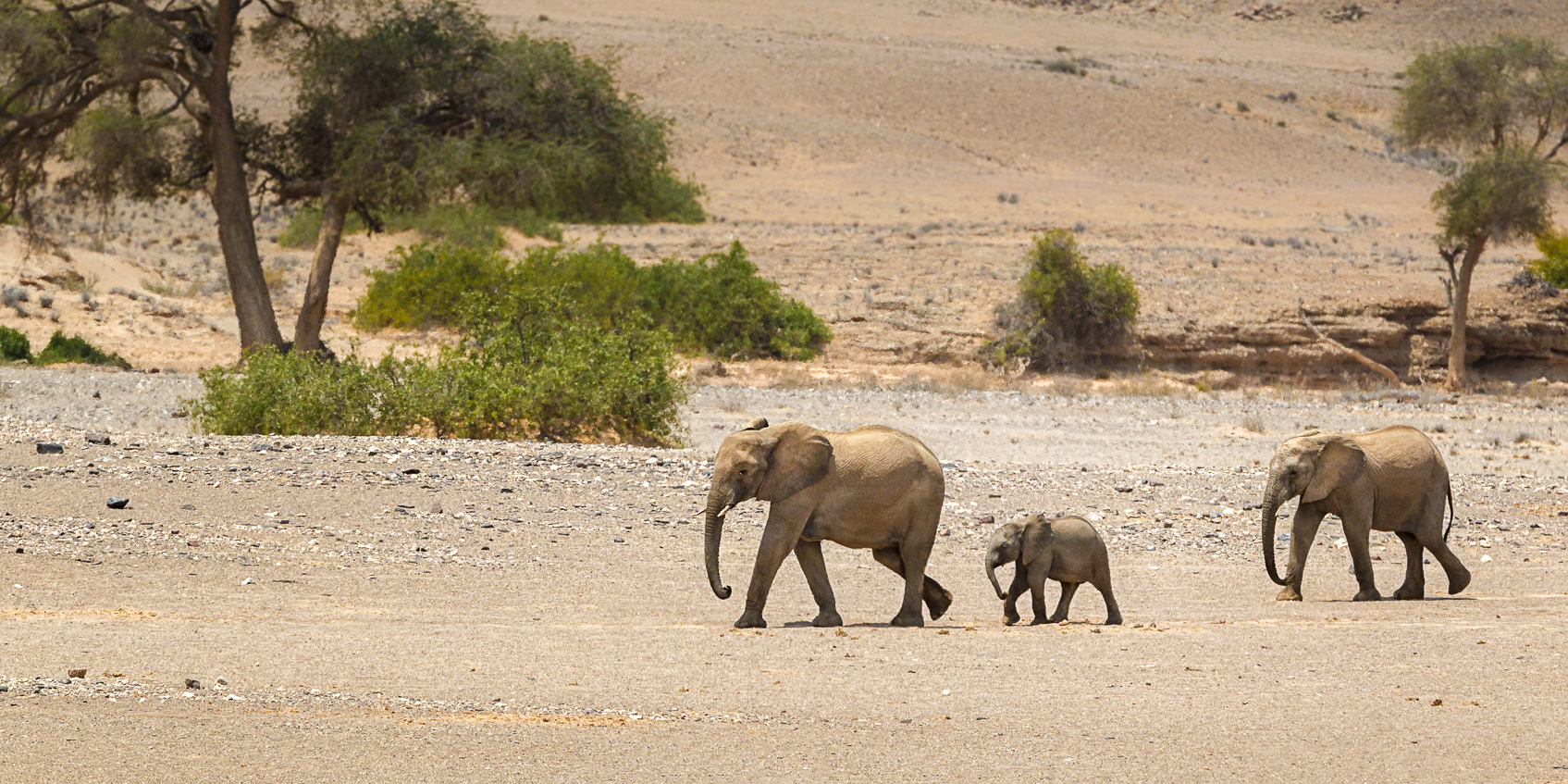African Desert elephants walk through the Hoanib riverbed in Namibia. Undoubtedly, the riverbed and surroundings look extremely dry. Of course, it is in the Namibian desert. Between two adult elephants walk a small calf, well protected by the adult’s female animals. Behind the animals, the browny colors of the photograph break up by green bushes. The Desert elephants walk from the right to the left, crossing the riverbed. Behind them, you see a tree and shrubs that take up the left side of that wildlife photograph.
It is incredible to see the rugged mountains and canyons along the Hoanib River. Additionally, they provide shelter for many Namibian wildlife and birds. Indeed, with a 270 km / 167 mi length, the Hoanib river is one of the 12 short seasonal rivers in west Namibia. Also, being the border between northern Damaraland and Kaokoland. Desert elephants and Desert Lions that live here have adapted to the desert habitat. You will often find Desert elephants and Zebras marching in riverbeds. As illustrated in that animal photograph, ‘Elephants Walk Through A Riverbed.’
Desert Elephants Of Namibia
Namibian elephants generally form in herds of about 10 – 20 members, led by a matriarch. Following the dry spells, they will all congregate at watering holes. Potentially, elephants can live up to 70 years old, depending on the success of their environment. Of course, what plays a role is the availability of food and water.
African elephants, Loxodonta africana, are listed in the category vulnerable of the IUCN list.
Explore more of the Namibian Desert Elephants walking through a dry riverbed. You can license stock photos in my nature photography portfolios and purchase fine art prints as wall art online. I sell framed and unframed prints, such as fine art paper, acrylic, modern metal, and canvas.
This photograph is available to be purchased as a print. We offer our prints as unmounted fine art prints and framed prints that are ready-to-hang on your wall out of the box. Another option is that it can be licensed for personal or commercial use. Just click the add_shopping_cart icon left-hand side above the photo to select your choice.
For more information about the various types of prints we offer to purchase, please visit our Purchasing a print FAQ page.
Our Photo Licensing FAQ page explains the license types and helps you to choose the right license for your needs.
Before making a purchase, please read our Terms & Conditions page.

Jacques –
“Are we there yet?” -baby elephant
Anette Mossbacher –
lolol, like all children, ask. 😀 Thanks so much, Jacques.